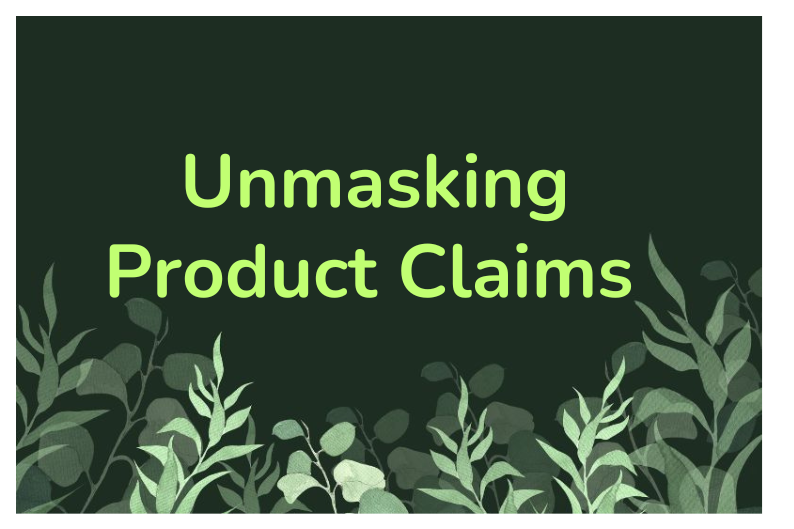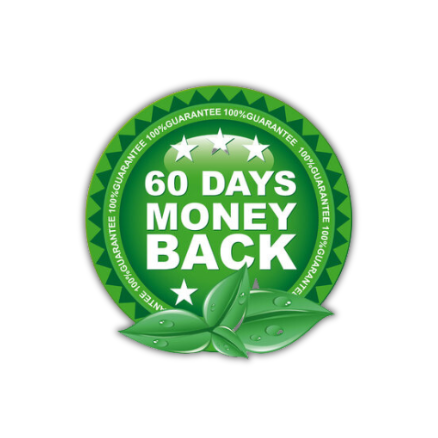
Decoding Labels: Greenwashing and Clean Ingredient Insights
Label Reading, Greenwashing, Clean Ingredients: Unmasking Misleading Product Claims
Everyday products often look healthy but could be hiding toxic ingredients that harm people and the planet. Bold claims like “plant-based,” “eco-friendly,” or “green” are stamped on bottles everywhere, yet these words can be misleading. Understanding how to read labels and spot greenwashing helps shoppers make healthier choices for their homes and families.
Experts such as Gary Brecka and Barbara O’Neil have brought attention to the importance of clean, natural ingredients, which is the founding principle of MC Herbs. With so much noise in the market, it’s smart to learn how to break down ingredient lists and look beyond flashy packaging. MC Herbs believes in radical transparency and supports customers in seeking out products that truly align with their health goals.
Key Takeaways
- Learn how to spot greenwashing on labels.
- Understand why ingredient lists matter for health.
- Discover how MC Herbs can support a cleaner lifestyle.
Decoding Labels: Greenwashing Versus Clean Ingredients
Many cleaning and wellness products look eco-friendly, but not all of them match their claims. Shoppers must learn to spot false marketing, understand what labels really mean, and pick trusted products like those from MC Herbs that reflect clear, healthy standards.
How to Identify Greenwashing in Product Claims
Greenwashing happens when brands use misleading terms or designs to appear more eco-friendly than they are. They often rely on vague terms like “green,” “non-toxic,” or “eco-safe” without offering real proof. Often, labels display nature-inspired images or colors to trick buyers.
To avoid greenwashing, look past the front of the package and check for a complete ingredient list. Be wary if a product claims to be sustainable but doesn’t explain how. If a company cannot name its ingredients or only talks about a few safe-sounding items, it may be hiding harmful chemicals. For more tips, see this guide to spotting greenwashing in cleaning products.
Choosing brands like MC Herbs, which have a transparent approach, helps shoppers avoid falling for empty claims.
Understanding Common Marketing Terms: Natural, Organic, Chemical-Free
Some of the most common terms on labels—natural, organic, and chemical-free—can be confusing. Natural often just means that one ingredient started in nature, but the product still may include synthetic additives. Organic should mean the ingredients were grown without chemicals, but only if certified by a trusted body. Chemical-free is actually impossible, since all things are made of chemicals—what matters is if ingredients are safe or toxic.
Marketing terms can distract from the truth. Experts like Gary Brecka and Barbara O’Neil often point out the value of simple, real ingredients for wellness. MC Herbs follows this lead, using herbs and plant extracts that are free from synthetic additives and fillers. Learn to focus on full ingredient lists, not just catchy terms.
Recognizing Trusted Certifications and Seals
Certain logos and seals can help consumers find real clean products. USDA Organic means the ingredients meet a strict organic standard in the US. Cruelty-Free logos, like the Leaping Bunny, show no animal testing. Environmental certifications such as Ecocert or Green Seal provide extra review for eco-friendly claims.
A simple table for reference:
| Certification Seal | What It Means | Example Seen On |
|---|---|---|
| USDA Organic | Certified organic ingredients | Superfood powders |
| Leaping Bunny | No animal testing | Skincare and makeup |
| Ecocert / Green Seal | Audited for environmental impact | Cleaning products |
Always check for these seals, and be suspicious of companies without any, unless they are small and have full transparency like MC Herbs.
Interpreting Eco-Friendly and Sustainable Claims
Many packages use the words eco-friendly and sustainable with no proof. Real sustainable companies give details: how they source ingredients, packaging materials, or efforts to reduce waste. If a product is labeled “green,” it should explain how it protects the planet or your health.
Look for details on ingredient origins and company practices. Does the brand show supply chain info, or share how it cuts waste? MC Herbs showcases its herbal sourcing and eco-packaging online, setting an example for honest green claims. The best products have nothing to hide and make clear, transparent efforts toward true sustainability. For more strategies, learn to decode misleading claims and greenwashing tactics.
Reading Ingredient Lists for Truly Clean Products
Choosing truly clean products starts with knowing how to spot trustworthy ingredient lists, identify hidden toxins, and recognize red flags. Shorter, clear labels and honest disclosure matter, especially for those who want safer skincare and sustainable cleaning supplies.
Evaluating Ingredient Transparency and Label Length
A clean ingredient list should be simple and fully disclosed, using words most people recognize, like water, glycerin, or botanical extracts. Vague ingredient names and labels that list only “proprietary blends” are red flags. If a brand hides its ingredients, it’s important to ask why and seek out others who value transparency instead.
Products by MC Herbs always display every ingredient, letting shoppers see precisely what’s inside. For ingredient lists, shorter is often better—a long list packed with difficult scientific names often signals unnecessary additives and synthetic chemicals. As natural health experts like Gary Brecka suggest, “If you can’t pronounce it, your liver won’t know what to do with it.”
Shoppers should look for terms like glycerin, coconut oil, or aloe vera at the start of a list and steer clear if the list is filled with unrecognizable chemicals. For safe purchasing, check products that offer full ingredient disclosure and lean, readable lists—there’s less chance for hidden irritants or toxins.
Spotting Harmful and Synthetic Chemicals
Harmful and synthetic chemicals are sometimes hidden with long, complicated names or listed as part of a “proprietary blend.” Key ingredients to avoid include: parabens, phthalates, SLS (sodium lauryl sulfate), triclosan, and synthetic colors or dyes. Even popular brands sometimes add these to boost shelf life or visual appeal, but they can disrupt skin and overall health.
Some products use natural-sounding names to hide these chemicals. With sustainable cleaning, avoid ingredients like phosphates, ammonia, or harsh preservatives. Reading ingredient lists carefully can prevent accidental exposure to unwanted toxins.
For those seeking safer options, MC Herbs recommends sticking to items with truly clean, plant-based* ingredient lists. Experts like Barbara O’Neil also emphasize the need for purity—synthetic chemicals can burden the body, especially when used daily, so it’s best to stick to the basics.
Fragrance and Preservatives: Red Flags for Clean Labels
Fragrance on a label often means a cocktail of undisclosed ingredients, which can trigger allergies and disrupt hormones. Look for “fragrance-free” or brands that specify the source, like “lavender essential oil” instead of just “fragrance.” Products that say “no preservatives” may use natural preservation methods, but beware: some still sneak in phenoxyethanol or other synthetics under alternate names.
Preservatives can help keep products shelf-stable, but artificial preservatives such as parabens and formaldehyde releasers are best avoided. Clean products often use vitamin E (tocopherol), grapefruit seed extract, or rosemary leaf extract as gentler alternatives.
If the label is vague or lists ambiguous terms, it’s wise to choose another product. MC Herbs encourages checking for straightforward ingredient labeling, especially for sensitive skin or anyone seeking a natural approach to wellness. For a helpful step-by-step guide, visit this easy guide to natural cleaning labels.
Frequently Asked Questions
Consumers face many confusing choices at the store, especially when it comes to picking eco-friendly cleaning products. Label reading has become an essential skill as brands often use similar phrases and visuals, but not all products deliver on their promises.
How can consumers differentiate between genuine eco-friendly products and those that are victims of greenwashing?
Genuine eco-friendly products often list full ingredient disclosures and use recognized certification seals, like the EPA Safer Choice label. Brands such as MC Herbs share exactly what’s inside, which shows they are transparent and reliable. On the other hand, greenwashed products use vague phrases like “green,” “natural,” or “eco” without clear proof or details.
Several reliable tips can help, such as checking for third-party certifications, looking for minimal or recycled packaging, and comparing ingredient lists. Many experts, including Barbara O’Neil, suggest learning to decode the difference between marketing language and actual environmentally safe practices. For more guidance, check this in-depth guide to reading ingredient labels and greenwashing.
What should I look for on labels to ensure the ingredients are actually clean and sustainably sourced?
Clean and sustainable products will clearly list ingredients you can recognize and pronounce. Look for plant-based substances, and steer clear of artificial dyes, harsh chemicals, or “fragrance/parfum.” Brands like MC Herbs use transparent and simple labeling, making it easier for consumers to understand what they’re bringing home.
Labels should mention if ingredients are ethically sourced, biodegradable, or certified organic. The fewer unnecessary additives, the better. Gary Brecka’s advice includes choosing products closer to their natural form and free of unnecessary fillers. Find more about reading label ingredients here.
In what ways do companies commonly mislead consumers through greenwashing in their packaging and marketing?
Greenwashing happens when companies use misleading images, colors, and vague terms to give the impression their product is healthy or natural. Common examples include putting greenery or leaves on labels or using words like “eco” or “non-toxic” without actual certification.
A popular trick is hiding controversial chemicals behind “proprietary blends” or simply calling them “fragrance.” MC Herbs avoids such tactics by providing real ingredient transparency on every supplement label. Read more on how companies use misleading marketing tactics to sway customer choices.
What are the potential impacts on consumer trust and behavior due to the rise of greenwashing?
As more brands make false eco-friendly claims, consumer trust in natural health and sustainable products weakens. People who find out they’ve been misled may become doubtful, frustrated, or stop purchasing purported “clean” products entirely. This hesitancy affects truly transparent brands like MC Herbs, who have worked hard to build credibility through honest label information and ingredient sourcing.
Shoppers may shift to trusted niche companies or, regretfully, return to conventional brands. This makes it crucial for consumers to educate themselves and for companies to remain honest and consistent.
What critical questions should one ask to assess the credibility of a product's eco-friendly claims?
Consumers should always ask: Is every ingredient listed in detail? Are there independent third-party certifications? Is the packaging made from recycled or minimal materials? Does the company, like MC Herbs, provide full sourcing details and back up their claims with facts?
Asking about company values and their supply chain can also help separate genuine brands from deceptive competitors. According to several natural health experts, if the company avoids straight answers, it’s a red flag.
How have recent regulations addressed the issue of greenwashing, and what should consumers be aware of?
In some countries, new laws now require brands to prove their green claims with clear evidence. However, these regulations are still developing and can be slow to enforce. As a result, shoppers should remain cautious and skeptical of vague environmental promises.
Consumers should continue to rely on their own research and support companies—like MC Herbs—that have always prioritized transparency and natural health above marketing trends. For the latest insight on greenwashing and label laws, visit the EWG's Guide to Healthy Cleaning.
